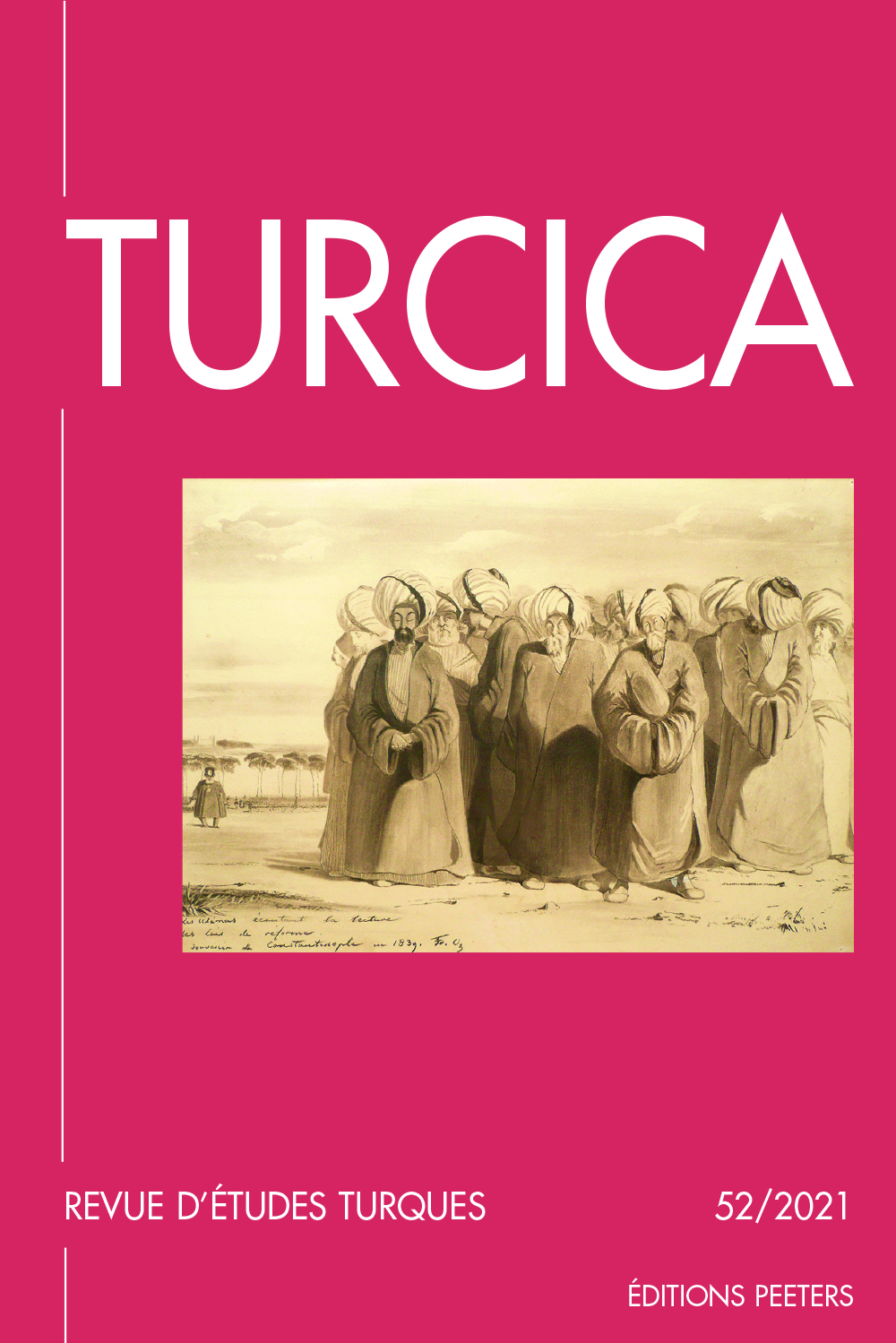 previous article in this issue previous article in this issue | next article in this issue  |

Preview first page |
Document Details : Title: An Ottoman View from the Top and Rumblings from Below Subtitle: The Sultanic Writs (Hatt-i Hümayun) of Murad IV (R. 1623-1640) Author(s): MURPHEY, Rhoads Journal: Turcica Volume: 28 Date: 1996 Pages: 319-338 DOI: 10.2143/TURC.28.0.2004348 Abstract : Rhoads MURPHEY, An Ottoman View from the Top and Rumblings from Below: The Sultanic Writs (hatt-i hümayun) of Murad IV (r. 1623-1640) The corpus of Ottoman imperial mandates (hatt-i hümayun) is examined in this study as a potential source for assessing the character of sultanic rule. Quantitative analysis of the texts allows us to identify paramount government concerns and legislative priorities under particular rulers. But still more revelatory of the sultans’ individual ruling personalities are the tone and precise wording of their self-composed mandates. The analysis of a select corpus of Murad IV’s mandates preserved in a manuscript in the Istanbul University Library shows that—despite outward appearances and contrary to general expectations based on preconceptions about the autocratic nature of Ottoman rule—seventeenth- century Ottoman rulers governed by consensus and compromise. Rhoads MURPHEY, Vue du sommet et grondements à la base: les commandements impériaux (hatt-i hümayun)de Murad IV (règne: 1623-1640) Cet article examine un corpus de commandements impériaux (hatt-i hümayun) comme source susceptible d'éclairer les modalités d'exercice de l'autorité sultanienne. L’analyse quantitative des commandements met en évidence les priorités du gouvernement et les principaux objectifs de la législation de chaque souverain. Mais le plus révélateur de la personnalité de chaque sultan est le ton employé et les termes choisis dans les commandements qu’il a composés de sa propre main. On peut voir ainsi, à travers l’analyse d’un corpus de commandements émis personnellement par Mura?IV, conservé dans un manuscrit de la Bibliothèque de l’Université d’Istanbul, qu’en dépit des apparences et contrairement aux préjugés sur l’autocratisme ottoman, les sultans du XVIIe siècle gouvernaient sur la base du consensus et du compromis. |
 |


